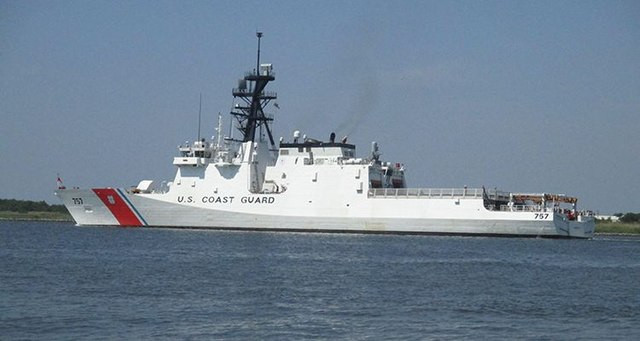In a recent development that underscores the growing military activities in the Arctic region, Chinese Navy ships were spotted within the U.S. Exclusive Economic Zone (EEZ) of the Bering Sea. The U.S. Coast Guard revealed that the sighting occurred late last week during a routine patrol, heightening concerns about the strategic movements of China in proximity to U.S. territorial waters.
The U.S. Coast Guard Cutter Kimball detected three Chinese military vessels approximately 124 miles north of the Amchitka Pass, a critical strait in the Aleutian Islands. Additionally, a Coast Guard aircraft from Kodiak Island identified a fourth Chinese ship about 84 miles north of the Amukta Pass, situated between the islands of Amutka and Seguam. While the ships were operating in international waters, they were within the 200-nautical-mile EEZ, where the United States holds exclusive rights to exploit marine resources.
"The Kimball patrolled under Operation Frontier Sentinel, a Coast Guard operation designed to meet presence with presence when strategic competitors operate in and around U.S. waters," the Coast Guard stated. This initiative aims to assert U.S. presence and ensure there are no disruptions to national interests in the region.
Rear Adm. Megan Dean, commander of the Seventeenth Coast Guard District, emphasized that the Chinese naval presence adhered to international rules and norms. "We met presence with presence to ensure there were no disruptions to U.S. interests in the maritime environment around Alaska," Dean stated. The Chinese ships reportedly communicated that their mission was focused on "freedom of navigation operations."
The Coast Guard continued to monitor the Chinese vessels until they departed south into the North Pacific Ocean, and the Kimball remains vigilant in the area to ensure ongoing security and surveillance.
This incident is not an isolated one. Similar sightings of Chinese military ships in the Bering Sea were reported by the Coast Guard in 2021 and 2022. Furthermore, in August 2023, the U.S. Navy dispatched four destroyers to the Alaskan coast after a significant patrol of 11 Chinese and Russian warships was observed within the EEZ.
The increasing frequency of these encounters signals a shift in naval dynamics and strategic positioning. The Chinese naval activities near Alaska are part of a broader pattern of assertive military maneuvers by Beijing, reflecting its ambitions to project power and influence far beyond its immediate geographical boundaries.
The U.S. Coast Guard's Operation Frontier Sentinel plays a crucial role in responding to such strategic challenges. By maintaining a visible presence and conducting continuous patrols, the Coast Guard aims to deter potential threats and reassure U.S. allies of its commitment to maritime security.
China has yet to issue a public statement regarding the U.S. Coast Guard's report. However, the implications of these sightings extend beyond immediate military concerns, touching on broader geopolitical tensions and the strategic importance of the Arctic region. The Arctic, rich in untapped natural resources and new shipping routes, has become a focal point for both economic and military interests of global powers.
The latest encounters underscore the necessity for robust maritime surveillance and the strategic deployment of U.S. naval assets in key regions. As global powers continue to vie for influence, the role of the U.S. Coast Guard and Navy in safeguarding national interests and maintaining stability in international waters becomes increasingly pivotal.






